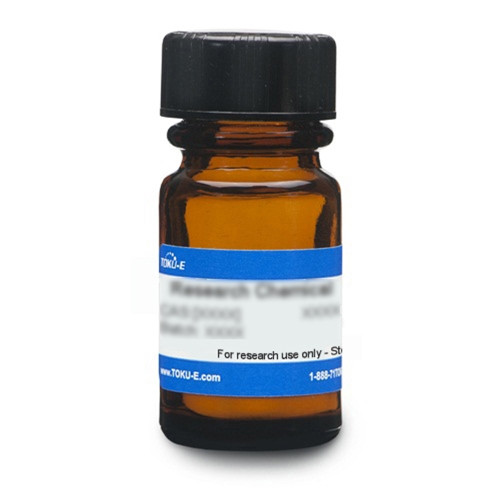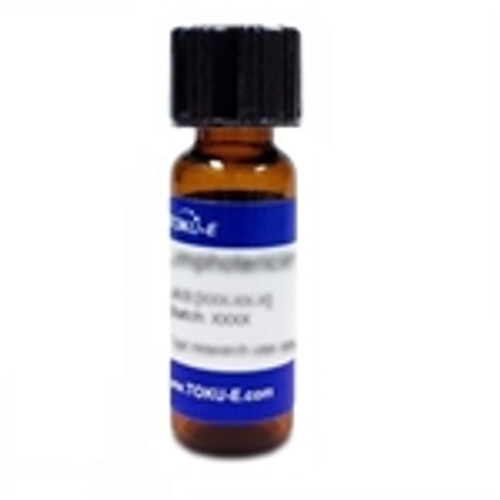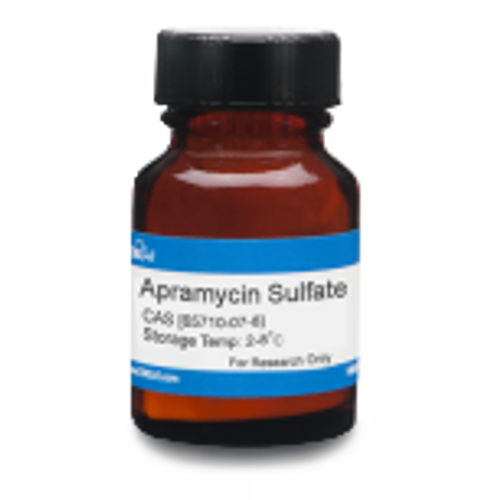Arbekacin Sulfate (syn: Habekacin Sulfate) is a semisynthetic aminoglycoside antibiotic derived from kanamycin. It was discovered in 1972 orginally synthetized from dibekacin in 1973 (Hamao Umezawa). Its general structure is characterized by two or more aminosugars linked by glycosidic bonds to an aminocyclitol scaffold. Arbekacin is not inactivated by aminoglycoside-inactivating enzymes and shows concentration-dependent effects. Aminoglycoside-induced nephrotoxicity and ototoxicity is not well understood. Understanding the mechanisms of toxicity at the cellular/subcellular level may help in discovery of high-efficacy and low-toxicity aminoglycosides.
Arbekacin Sulfate is very soluble in water.
| Mechanism of Action | Arbekacin irreversibly binds to bacterial 30S and 16S ribosomal subunits thus inhibiting protein synthesis. Aminoglycosides such as bind to the bacterial 30S ribosomal subunit, causing misreading of tRNA which leaves the bacterium unable to synthesize proteins. |
| Spectrum | Arbekacin has broad-spectrum activity against Gram-positive bacteria such as methicillin-resistant Staphyloccus aureus (MRSA) and Gram-negative bacteria such as Escherichia coli, Pseudomonas aeruginosa, and Klebsiella pneumonia. It has a synergistic effect in combination with beta-lactams and has activity against multidrug-resistant strains and A. aeruginosa and Acinetobacter baumannii. |
| Microbiology Applications |
Arbekacin is commonly used in clinical in vitro microbiological antimicrobial susceptibility tests (panels, discs, and MIC strips) against Gram-positive and Gram-negative microbial isolates. Medical microbiologists use AST results to recommend antibiotic treatment options. |
| Molecular Formula |
C22H44N6O10 ∙ H2SO4 |
| References |
Lee JH, Lee CS (2016) Clinical usefulness of Arbekacin. Infect Chemother. 48(1):1-11 PMID 27104010 Matsumoto T et al (2013) Clinical efficacy and safety of Arbekacin Sulfate in patients with MRSA sepsis or pneumonia: a multi-institutional study. J. Infect. Chemother. 19(1):128-137 Newman DJ and Cragg GM (2020) Natural products as sources of new drugs over the nearly four decades from 01/1981 to 09/2019. J. Nat. Prod. 83, 3:770-803 Olier B, Morin JP, Thomas N, Fillastre JP (1988) Habekacin: A new aminoglycoside. Study of nephrotoxicity in rats in comparison with gentamicin, netilmicin and amikacin. Pathol Biol 36:795-800 Takashi Kitahara et al (2004) Antimicrobial activity of saturated fatty acids and fatty amines against methicillin-resistant Staphylococcus aureus Biol. Pharm. Bull 27(9):1321-1326
|







